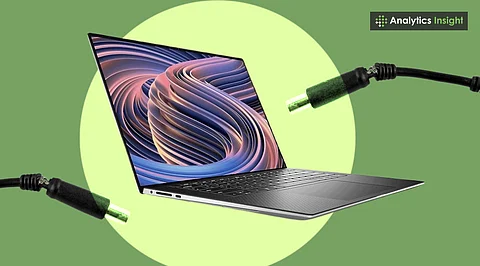

Faulty power adapters and loose connections are common reasons behind Dell laptop charging issues.
BIOS updates and driver checks can often resolve software-related charging problems.
Replacing a worn-out battery or resetting power settings can restore normal charging function.
Encountering difficulties with laptop charging can be a significant inconvenience, particularly for individuals who rely on their devices for daily activities in professional or academic environments. Like other manufacturers, Dell laptops are not immune to such issues, which can arise from hardware faults, software glitches, or battery degradation.
Determining the underlying cause can aid in devising a solution, potentially precluding the necessity for professional repair services.
Most Dell charging problems start at the power supply. A faulty adapter or cable can cause charging to be inconsistent or stop it entirely. Start by checking the charger for any damage like frayed wires, bent connectors, or exposed wiring.
Try a different compatible charger to eliminate the adapter as the problem. If your laptop charges with the substitute, you may have to replace your original charger.
Ensure the electrical outlet is functional by testing it with another device. Defective power strips or surge protectors can impede the charging process.
Also Read: Best Laptops with Touch Screen for Seamless Work & Play
Maybe your charging port is acting up. It's a pretty common thing. Sometimes dust or gunk gets stuck in there, or a pin inside might be bent, messing with the charge. Grab a small brush or some air to carefully clean it out.
Once you plug the charger in, give it a little wiggle. Does the charging stop if you do that? Then, the port is probably loose inside. Hardware problems like that usually mean it's time to see a repair person.
A laptop battery's diminished ability to hold a charge often suggests it's nearing the end of its lifespan. Dell laptops have built-in diagnostic tools like Dell Power Manager or Dell Battery Meter that can help you check the battery's health.
These tools let you know if your battery is doing okay, needs attention, or should be replaced. If they say it's time for a new one, grabbing a fresh Dell battery is probably the way to go.
You can also check the battery in the BIOS. Restart your laptop, repeatedly press F2, and enter the BIOS menu. Find the battery health status there. A weak or dead battery usually needs to be replaced to restore proper function.
Old BIOS or drivers can mess with charging. Dell often sends out firmware fixes that help things run smoother. Just hop over to the Dell support page, type in your laptop's info, and grab the newest BIOS and chipset drivers.
Make sure you're plugged in when you update, and don't stop halfway through. Doing this right can knock out a lot of charging problems that come from software.
Residual power in the hardware can prevent proper charging. A power reset will discharge any remaining energy.
Here's how:
Turn off the laptop completely.
First, unplug the charger and pop out the battery if you can.
Next, press and hold the power button for like, 15 seconds.
After that, put the battery back and plug the charger back in.
Finally, turn on the laptop and see if it starts charging.
This step often fixes charging problems caused by static electricity.
Dell laptops might have charging preferences set to conserve battery lifespan. In the Dell Power Manager, options like Adaptive, Primarily AC Use, or Custom can restrict the maximum charge.
Change the setting to Standard to allow charging to 100%. This change can help if the battery stops charging at a certain point.
Dell laptops have built-in diagnostics that can find hardware problems. Press F12 when starting up and choose Diagnostics from the menu.
If the problem remains after trying these steps, consider getting help from a professional. Issues like motherboard problems, power circuit faults, or BIOS corruption might need a service center to fix them. Make sure to check your warranty status before getting paid support.
Also Read: Building Smarter AI: A Hardware-Aware Revolution for Sustainable and Efficient Intelligence
Dell laptop charging issues can be frustrating, but in many cases, they can be resolved independently by identifying the root cause. Potential culprits include a faulty cable, software issues, or an aging battery.
Fortunately, troubleshooting and repairing the problem often eliminates the need for a new laptop. By addressing the issue promptly, users can help extend the lifespan of their device and prevent unexpected shutdowns.
1. Why is a Dell laptop not charging even when plugged in?
A faulty charger, damaged charging port, or weak battery could be the cause.
2. How can the Dell battery health be checked?
Battery health can be checked using Dell Power Manager or through the BIOS menu.
3. What does a blinking charging light on a Dell laptop mean?
It often signals an issue with the battery or power supply that needs attention.
4. Can an outdated BIOS cause charging problems in Dell laptops?
Yes, outdated BIOS or drivers can lead to charging issues and should be updated.
5. What is the purpose of a power reset in Dell laptops?
A power reset removes static build-up and can resolve charging-related malfunctions.
